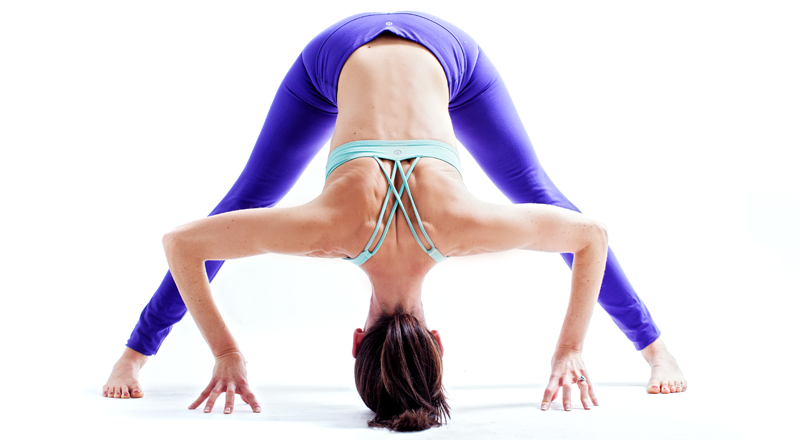Strengthen Your Core With Yoga

One of the most common requests from students in my yoga classes is for us to devote part of the hour to ab work. And while it’s definitely true that yoga can help tone abs, what students should be asking is how to strengthen their core.
We often think that core and ab-strengthening are one in the same, but ab muscles actually have a very limited and specific action, whereas the core consists of many different muscles that stabilize the spine and pelvis and run the length of the torso and trunk.
- The major muscles of your core include:
- Transverse abdominus (deepest of the abdominal muscles
- External obliques (these muscles are located on the side and front of the abdomen)
- Internal obliques (under the external obliques running the opposite direction),
- Rectus abdominus (run along the front of the abdomen
- Erector spinae (a collection of three muscles along your neck to your lower back).
Core strength will gives us a strong and grounded yoga practice. It allows us to transition from pose to pose in an effortless and relaxed manner and it helps give us better control over our movements, it also distributes the stresses of weight-bearing and protects the back. Speaking of the back, some studies state that a whopping 90 percent of the population experience back pain. Did you know that a weak and unbalanced core is linked to lower back pain?
Having a strong core also will also reduce the risk of injuries in our practice. As we do jumps and rebounds (on and off our yoga mats), the core acts as a shock absorber. When the core is weak, the shock-absorbing properties are limited.
On an emotional level, strengthening the core is vital. When we can bring awareness to our core, we can also get in touch with our gut. Ever notice when you’re nervous, your stomach starts to do flips and turns? Our core is our centre. A strong core helps us connect to our truth and our intuition. As our core becomes stronger, and as we learn to follow our gut feelings, we become one with our true selves.
So what yoga poses help strengthen our core?
- Forward bends such as Uttanasana (Standing Forward Bend)
- Prasarita Padottanasana (Wide-Legged Forward Bend)
- Balancing poses such as Navasana (Boat Pose)
- Bakasana (Crane Pose)
Practice Navasana at home or at the office, beginners or practicing yogis all can benefit from this pose.
Navasana (Boat Pose)
1. Sit on the floor with your knees bent feet on the floor.
2. Bring your hands underneath your thighs and lift your legs so that your ankles are in line with your knees.
3. Bring your feet together and point your toes.
4. For a more advanced pose, straighten your legs so that your body and legs are in a 45 degree angle.
5. Stretch our your arms parallel to the floor.
6. Keep neck and spine long and chest wide.
7. Do not round your back and soften your shoulders down.
8. Look to where wall meets the ceiling.
9. Stay in the pose from 10-20 seconds all the way up to a minute.
